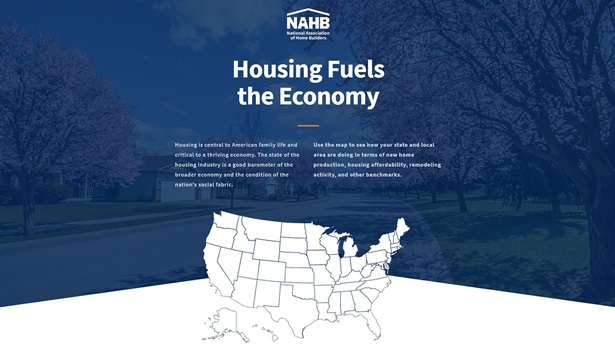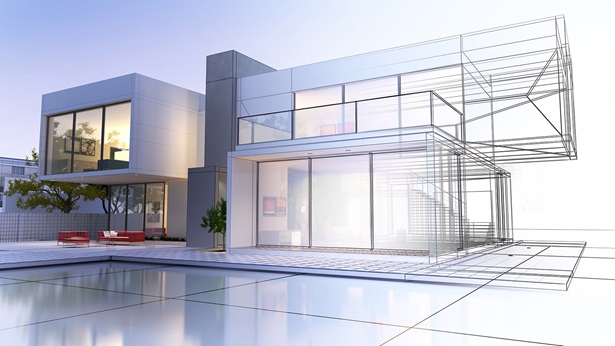Custom Homes: Design Trends, Benefits and Sustainability
A custom home stands out from the crowd. Owners of a custom home get to enjoy a one-of-a-kind creation that offers luxurious modern living upgrades and unique architectural design.
In addition to flexibility in home design and architecture, buyers of custom homes typically choose their dream home location and environment. As a result, custom home design across the home building industry often incorporates elements of the local landscape, whether that is a view of the ocean, a natural stream, or the distinct colors and plants of a desert landscape.
Custom Home vs. a Production Home
While a production home builder constructs communities by restricting design to a group of preselected home styles on a build site they purchased themselves, a custom home builder will often build on land owned by the customer and start fresh with each design.
Production builders typically construct a large number of homes throughout the year. These homes may offer a variety of options, but production builders generally do not use construction plans other than the ones selected by the building firm. A custom home builder will spend more time on each project and often work on fewer than 10 homes a year to create a dream home for each of their clients.
Unique Benefits of a Custom Home
Today, home owners like to see features that will solve problems and improve their lifestyle through health, entertainment or comfort. In this way, a custom home can really set themselves apart from the competition.
Custom floor plans that include yoga studios, resistance pools and fitness rooms can be added to encourage healthy living; game rooms, theaters and even a bowling alley can be added for fun; and for comfort, breezy, screened-in porches or warm hearths can make your home feel cozy and welcoming.
Custom amenities are also taking a turn to the world of tech. In a world where there’s an app for everything, buyers are beginning to expect a custom home to do more and be “smarter.” Nowadays you can control many features in your home using a phone, including energy usage, security systems, lighting and even the music playing in each room.
Sustainability and Green Building Techniques of Custom Homes
Concern for the environment is growing among U.S. households — and so are energy costs. Because of this rising demand, many custom builders are embracing green building techniques. Features like solar panels, water-saving appliances, insulation to improve heating efficiency and the use of renewable or recycled building materials are all popular techniques to improve a home’s efficiency.
Custom builders allow buyers to include a wide range of green products and give them the opportunity to weigh each cost and benefit to create a home that is stylish, comfortable, but also eco-friendly.
Multi-generational Living Made Easy in a Custom Home
Whether it’s aging parents moving in with their adult children or young adults living back with mom and dad, multi-generational households have specific needs .
Custom builders are seeing an increasing need to tailor homes to this lifestyle. A recent Pew Research Center study shows that 39% of adults ages 18 to 34 have had to move in with their parents. In the same year, the U.S. Census reported that 4.3 out of 76 million households were made up of at least three generations.
Multi-generational families often build homes that include the traditional mother-in-law suite or even feature a locked-off living space within the home. These apartment-style spaces can have their own kitchenette, full bathroom and living areas to provide a sense of privacy and independence.
Why Choose a Custom Built Multi-generational Home?
There are several compelling reasons to consider a luxury multi-generational home:
- Flexible Living Spaces: These homes feature adaptable layouts that can be reconfigured over time to meet changing needs. For example, a bedroom can be easily converted into a home office or a gym.
- Increased Privacy: While still promoting a sense of community, multi-generational homes offer designated living spaces for different family members, ensuring everyone has their own private retreat.
- Shared Amenities: Luxury multi-generational homes often include high-end features like gourmet kitchens, home theaters, fitness centers, and resort-style outdoor living areas. These shared spaces promote togetherness and enjoyment.
- Peace of Mind: Knowing that loved ones have a place to live comfortably and age in place provides immense emotional security. It allows families to support each other in a way that fosters independence and dignity for all members.
The Square Footage Factor in Custom Built Homes
The size of a luxury home can significantly impact its livability and appeal. According to recent NAHB data, the average size of a single-family home in North America was 3,247 square feet in November 2022.
However, the square footage of a luxury home can vary widely based on the specific features, finishes and layout.
Luxury home buyers often expect a high level of customization and quality in their homes. As a result, the construction cost per square foot for a luxury residence can range from $200 to $500 or even higher.
This means that a 3,000-square-foot luxury home could potentially cost between $600,000 and $1.5 million to build, depending on the specific features and location.
How to Enhance Livability in a Custom Home
As the country grows older and baby boomers look to retire, Universal Design (UD) features are becoming an increasingly important consideration for custom home builders and buyers. This inclusive design philosophy focuses on creating spaces that are accessible and functional for everyone, regardless of age, ability, or stature.
By incorporating UD principles into a custom home, homeowners can create a living space that reflects their unique needs while ensuring it remains welcoming and usable for all.
What is Universal Design?
At its core, Universal Design is about designing products, places, and services in a way that benefits the widest possible range of people. It aims to make environments more inclusive by taking into account the diverse needs of all users.
For custom home builders, this means creating floor plans and selecting finishes that accommodate the varying needs of different populations, from children and older adults to individuals with disabilities or temporary injuries.
Benefits of Universal Design in Custom Built Homes
The advantages of incorporating UD into a custom home are numerous. First and foremost, it ensures the home is accessible and safe for all occupants, regardless of their age or ability. This not only promotes independence but also allows everyone to move through the spaces with ease and comfort.
Beyond accessibility, UD also promotes flexibility and adaptability. Features like wider doorways, adjustable-height counters, and open floor plans can be easily modified or reconfigured over time to meet changing needs. This makes the home future-proof, allowing it to evolve with the inhabitants as their circumstances change due to aging, growth, or shifts in lifestyle.
Perhaps most importantly, Universal Design creates an environment of inclusion. By catering to differing preferences, abilities, and learning styles, UD promotes social interaction and belonging. In a custom home, this can lead to a stronger sense of community and connection among family and friends who visit.
How to Incorporate Universal Design into a Custom Home
So, how can you incorporate Universal Design into your custom home? The key is to start thinking about accessibility and inclusion from the very beginning of the design process.
Work with your architect and builder to create floor plans that maximize the flow of the home, with wide hallways, open spaces, and clear pathways to all areas.
When it comes to finishes and fixtures, choose materials and products that are durable, low-maintenance, and easy to use. This might include non-slip flooring, lever handles on doors and cabinets, and adjustable-height appliances and counters.
Don’t forget about outdoor spaces, either. Create a seamless transition between the indoors and outdoors by using materials and designs that flow naturally from one to the other. This will make it easy for all occupants to move freely between the living spaces and outdoor areas.
As the demand for inclusive and accessible housing grows, Universal Design is poised to become a defining feature of custom home design in the coming years.
By embracing this philosophy, custom home builders can create living spaces that not only reflect the unique needs of their clients but also promote safety, comfort, and a sense of belonging for all who inhabit them.
Balancing Luxury and Function in Custom Built Homes
When designing a custom, luxury home with multi-generational appeal, it's crucial to strike a balance between opulence and practicality. Here are some key considerations:
- Open Floor Plans: Maximize the sense of space by incorporating open-concept living areas that flow seamlessly from one room to the next. This promotes easy interaction and sightlines between different zones.
- Luxury Finishes: Incorporate high-end materials and finishes throughout, such as marble countertops, custom cabinetry, and top-of-the-line appliances. These details elevate the overall aesthetic and create a sense of indulgence.
- Technological Integration: Smart home automation, advanced security systems, and whole-house audio/video are essential features in a luxury home. They provide conveniences and enhance the living experience.
- Outdoor Living Spaces: Design expansive outdoor areas with covered patios, outdoor kitchens, fire pits, and landscaped gardens. These spaces extend the living area and provide opportunities for relaxation and entertainment.



